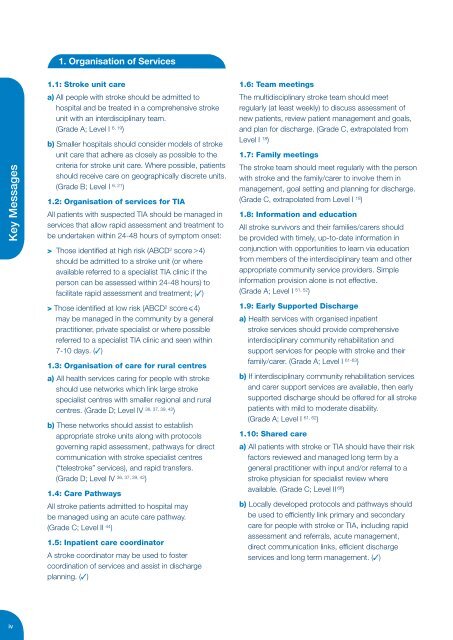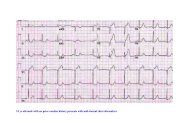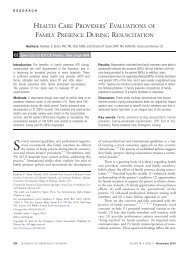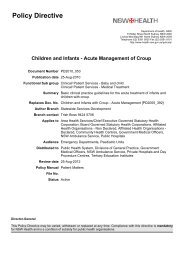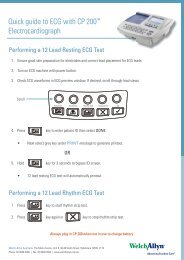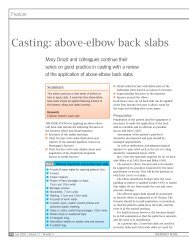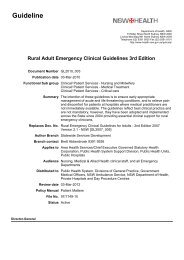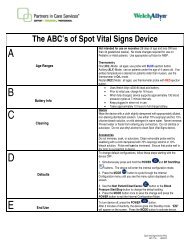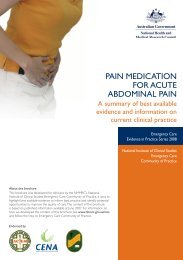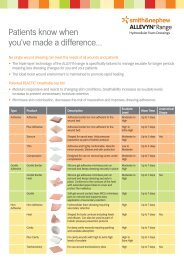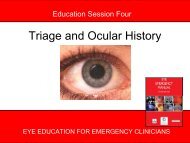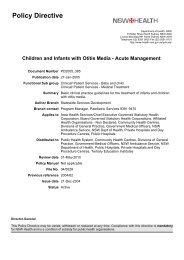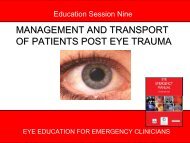Clinical Guidelines for Acute Stroke Management - Living on the EDge
Clinical Guidelines for Acute Stroke Management - Living on the EDge
Clinical Guidelines for Acute Stroke Management - Living on the EDge
Create successful ePaper yourself
Turn your PDF publications into a flip-book with our unique Google optimized e-Paper software.
1. Organisati<strong>on</strong> of Services<br />
Messages<br />
Key<br />
1.1: <str<strong>on</strong>g>Stroke</str<strong>on</strong>g> unit care<br />
a) All people with stroke should be admitted to<br />
hospital and be treated in a comprehensive stroke<br />
unit with an interdisciplinary team.<br />
(Grade A; Level I 6, 19 )<br />
b) Smaller hospitals should c<strong>on</strong>sider models of stroke<br />
unit care that adhere as closely as possible to <strong>the</strong><br />
criteria <str<strong>on</strong>g>for</str<strong>on</strong>g> stroke unit care. Where possible, patients<br />
should receive care <strong>on</strong> geographically discrete units.<br />
(Grade B; Level I 6, 21 )<br />
1.2: Organisati<strong>on</strong> of services <str<strong>on</strong>g>for</str<strong>on</strong>g> TIA<br />
All patients with suspected TIA should be managed in<br />
services that allow rapid assessment and treatment to<br />
be undertaken within 24-48 hours of symptom <strong>on</strong>set:<br />
> Those identified at high risk (ABCD 2<br />
should be admitted to a stroke unit (or where<br />
available referred to a specialist TIA clinic if <strong>the</strong><br />
pers<strong>on</strong> can be assessed within 24-48 hours) to<br />
facilitate rapid assessment and treatment; ( )<br />
> Those identified at low risk (ABCD 2 score 4)<br />
may be managed in <strong>the</strong> community by a general<br />
practiti<strong>on</strong>er, private specialist or where possible<br />
referred to a specialist TIA clinic and seen within<br />
7-10 days. ( )<br />
1.3: Organisati<strong>on</strong> of care <str<strong>on</strong>g>for</str<strong>on</strong>g> rural centres<br />
a) All health services caring <str<strong>on</strong>g>for</str<strong>on</strong>g> people with stroke<br />
should use networks which link large stroke<br />
specialist centres with smaller regi<strong>on</strong>al and rural<br />
centres. (Grade D; Level IV 36, 37, 39, 42 )<br />
b) These networks should assist to establish<br />
appropriate stroke units al<strong>on</strong>g with protocols<br />
governing rapid assessment, pathways <str<strong>on</strong>g>for</str<strong>on</strong>g> direct<br />
communicati<strong>on</strong> with stroke specialist centres<br />
(“telestroke” services), and rapid transfers.<br />
(Grade D; Level IV 36, 37, 39, 42 )<br />
1.4: Care Pathways<br />
All stroke patients admitted to hospital may<br />
be managed using an acute care pathway.<br />
(Grade C; Level II 44 )<br />
1.5: Inpatient care coordinator<br />
A stroke coordinator may be used to foster<br />
coordinati<strong>on</strong> of services and assist in discharge<br />
planning. ( )<br />
1.6: Team meetings<br />
The multidisciplinary stroke team should meet<br />
regularly (at least weekly) to discuss assessment of<br />
new patients, review patient management and goals,<br />
and plan <str<strong>on</strong>g>for</str<strong>on</strong>g> discharge. (Grade C, extrapolated from<br />
Level I 18 )<br />
1.7: Family meetings<br />
The stroke team should meet regularly with <strong>the</strong> pers<strong>on</strong><br />
with stroke and <strong>the</strong> family/carer to involve <strong>the</strong>m in<br />
management, goal setting and planning <str<strong>on</strong>g>for</str<strong>on</strong>g> discharge.<br />
(Grade C, extrapolated from Level I 18 )<br />
1.8: In<str<strong>on</strong>g>for</str<strong>on</strong>g>mati<strong>on</strong> and educati<strong>on</strong><br />
All stroke survivors and <strong>the</strong>ir families/carers should<br />
be provided with timely, up-to-date in<str<strong>on</strong>g>for</str<strong>on</strong>g>mati<strong>on</strong> in<br />
c<strong>on</strong>juncti<strong>on</strong> with opportunities to learn via educati<strong>on</strong><br />
from members of <strong>the</strong> interdisciplinary team and o<strong>the</strong>r<br />
appropriate community service providers. Simple<br />
in<str<strong>on</strong>g>for</str<strong>on</strong>g>mati<strong>on</strong> provisi<strong>on</strong> al<strong>on</strong>e is not effective.<br />
(Grade A; Level I 51, 52 )<br />
1.9: Early Supported Discharge<br />
a) Health services with organised inpatient<br />
stroke services should provide comprehensive<br />
interdisciplinary community rehabilitati<strong>on</strong> and<br />
support services <str<strong>on</strong>g>for</str<strong>on</strong>g> people with stroke and <strong>the</strong>ir<br />
family/carer. (Grade A; Level I 61-63 )<br />
b) If interdisciplinary community rehabilitati<strong>on</strong> services<br />
and carer support services are available, <strong>the</strong>n early<br />
supported discharge should be offered <str<strong>on</strong>g>for</str<strong>on</strong>g> all stroke<br />
patients with mild to moderate disability.<br />
(Grade A; Level I 61, 62 )<br />
1.10: Shared care<br />
a) All patients with stroke or TIA should have <strong>the</strong>ir risk<br />
factors reviewed and managed l<strong>on</strong>g term by a<br />
general practiti<strong>on</strong>er with input and/or referral to a<br />
stroke physician <str<strong>on</strong>g>for</str<strong>on</strong>g> specialist review where<br />
available. (Grade C; Level II 68 )<br />
b) Locally developed protocols and pathways should<br />
be used to efficiently link primary and sec<strong>on</strong>dary<br />
care <str<strong>on</strong>g>for</str<strong>on</strong>g> people with stroke or TIA, including rapid<br />
assessment and referrals, acute management,<br />
direct communicati<strong>on</strong> links, efficient discharge<br />
services and l<strong>on</strong>g term management. ( )<br />
iv


